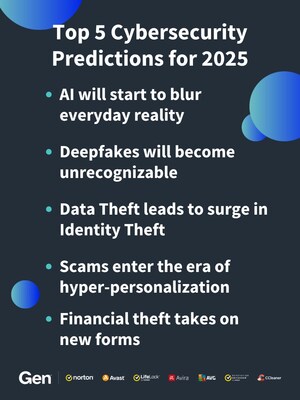The Following Frontier: Insightful Cybersecurity Predictions for the Coming Year
As we approach the new year, the cybersecurity landscape is on the verge of remarkable transformation. Key aspects such as the assimilation of advanced AI technologies, the inescapable surge of innovative ransomware, and the tightening of data privacy policies are shaping the future of electronic safety.
Surge of AI in Cybersecurity
In the swiftly evolving landscape of cybersecurity, the integration of artificial intelligence (AI) is becoming a pivotal force in enhancing risk detection and reaction abilities. AI innovations, such as maker understanding formulas and deep discovering versions, are being significantly released to examine huge amounts of data and identify patterns indicative of safety and security risks. cyber resilience. This makes it possible for companies to proactively attend to vulnerabilities before they can be manipulated
The surge of AI in cybersecurity is especially considerable in its ability to automate routine jobs, enabling human analysts to concentrate on even more complicated safety and security issues. By leveraging AI, cybersecurity groups can minimize reaction times and improve the precision of danger assessments. AI systems can adapt and find out from brand-new threats, continually fine-tuning their discovery systems to stay in advance of malicious stars.
As cyber risks come to be a lot more sophisticated, the requirement for sophisticated solutions will certainly drive further financial investment in AI technologies. This pattern will likely result in the advancement of boosted safety and security devices that integrate anticipating analytics and real-time monitoring, eventually fortifying organizational defenses. The change towards AI-powered cybersecurity remedies represents not just a technical shift however a basic modification in just how organizations approach their safety and security approaches.
Rise in Ransomware Strikes
Ransomware assaults have actually become a prevalent danger in the cybersecurity landscape, targeting companies of all sizes and across different fields. As we advance right into the coming year, it is anticipated that these assaults will certainly not just increase in frequency however additionally in refinement. Cybercriminals are leveraging advanced techniques, consisting of making use of synthetic knowledge and artificial intelligence, to bypass conventional safety actions and manipulate vulnerabilities within systems.
The escalation of ransomware attacks can be credited to a number of variables, consisting of the rise of remote work and the growing reliance on digital services. Organizations are frequently unprepared for the developing danger landscape, leaving important framework at risk to violations. The economic effects of ransomware are astonishing, with firms encountering substantial ransom money needs and prospective long-lasting operational disruptions.
Furthermore, the trend of double extortion-- where assaulters not only encrypt information yet additionally endanger to leak sensitive details-- has actually gotten traction, even more coercing targets to abide with needs. Because of this, businesses must focus on robust cybersecurity steps, consisting of regular back-ups, staff member training, and occurrence reaction planning, to minimize the dangers related to ransomware. Failing to do so might result in devastating effects in the year ahead.
Evolution of Information Privacy Rules
The landscape of data privacy guidelines is undergoing substantial improvement as federal governments and organizations respond to the enhancing worries surrounding individual information protection. Over the last few years, the implementation of comprehensive structures, such as the General Data Defense Policy (GDPR) in Europe and the California Customer Privacy Act (CCPA) in the USA, has actually set a criterion for stricter personal privacy laws. These guidelines highlight customers' legal rights to regulate their data, mandating openness and liability from organizations that gather and refine personal info.

In addition, companies will certainly require to improve their compliance techniques, spending in innovative modern technologies and training to secure delicate info. The development of data privacy laws will certainly not just effect exactly how companies run however additionally form customer expectations, fostering a culture of trust fund and security in the electronic landscape.
Development of Remote Work Vulnerabilities
As companies continue to accept remote work, susceptabilities in cybersecurity have actually progressively concerned the forefront. The change to versatile work setups has exposed critical gaps in protection procedures, particularly as staff members gain access to sensitive information from different locations and gadgets. This decentralized work setting produces an expanded strike surface area for cybercriminals, who manipulate unsecured Wi-Fi networks and individual devices to penetrate business systems.

To alleviate these susceptabilities, organizations need to focus on detailed cybersecurity training and carry out durable safety and security structures that incorporate remote job situations. This consists of multi-factor verification, regular system updates, and the establishment of clear procedures for information accessibility and sharing. By addressing these vulnerabilities head-on, business can cultivate a safer remote workplace while keeping functional resilience when faced with progressing cyber dangers.
Advancements in Threat Detection Technologies


Positive risk detection has actually become a keystone of contemporary cybersecurity strategies, mirroring the urgent demand to combat increasingly advanced cyber threats. As companies face an advancing landscape of vulnerabilities, innovations in danger detection modern technologies are crucial in mitigating threats and improving protection positions.
One remarkable trend is the assimilation of expert system and artificial intelligence right into risk discovery systems. These technologies allow the evaluation of large quantities of information in real time, enabling the why not look here recognition of anomalies and potentially harmful tasks that might evade standard protection steps. Furthermore, behavior analytics are being implemented to establish baselines for typical customer task, making it easier to discover inconsistencies a measure of a breach.
Furthermore, the increase of automated danger knowledge sharing systems facilitates collaborative defense efforts throughout markets. This real-time exchange of details boosts situational recognition and accelerates response times to emerging risks.
As organizations continue to purchase these sophisticated innovations, the efficiency of cyber defense systems will dramatically boost, encouraging security groups to remain one action in advance of cybercriminals. Inevitably, these improvements will certainly play a crucial function in forming the future landscape of cybersecurity.
Final Thought
In summary, the approaching year is expected to witness transformative developments in cybersecurity, driven by the integration of AI modern technologies and a remarkable rise in ransomware strikes. As information privacy policies become more rigorous, companies will need to boost conformity methods. The continuous challenges postured by remote job vulnerabilities necessitate the implementation of durable safety procedures and extensive training. Overall, these advancing characteristics underscore the essential relevance of adapting to an ever-changing cybersecurity landscape.
Comments on “Defend against the growing threat of cyber attacks in today's digital world.”